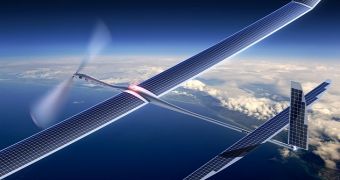Satellites are a great tool in many areas, from communication to surveillance to, well, spying. But they're also prohibitively expensive, even today, and, while the price of putting something into orbit is going down, with the likes of SpaceX and others pioneering more efficient and cheaper rockets, it's going to stay expensive for a while more.
Titan Aerospace, an US startup, has an alternative, its new solar-powered drones that can stay afloat for years and do the kind of jobs that satellites are regularly used for.
The Solara 50, the company's first product, is a high-altitude drone powered by electricity from the solar cells that cover its body and the batteries that are used to store excess energy.
With a 50-meter (164-feet) wingspan, it's designed to fly at between 18,000 and 21,000 meters (60,000 to 70,000 feet) where there's very little weather to disturb it.
It has a relatively modest payload of about 31 kilograms (70 pounds), but that's more than enough for a powerful camera or a communication antenna. The latter would only cover a ground area of 30 kilometers (18 miles), not enough for TV broadcasts for example, but enough to serve as a viable wireless internet source.
The company is also working on a larger model, the Solara 60, which can carry three times as much payload.

 14 DAY TRIAL //
14 DAY TRIAL //